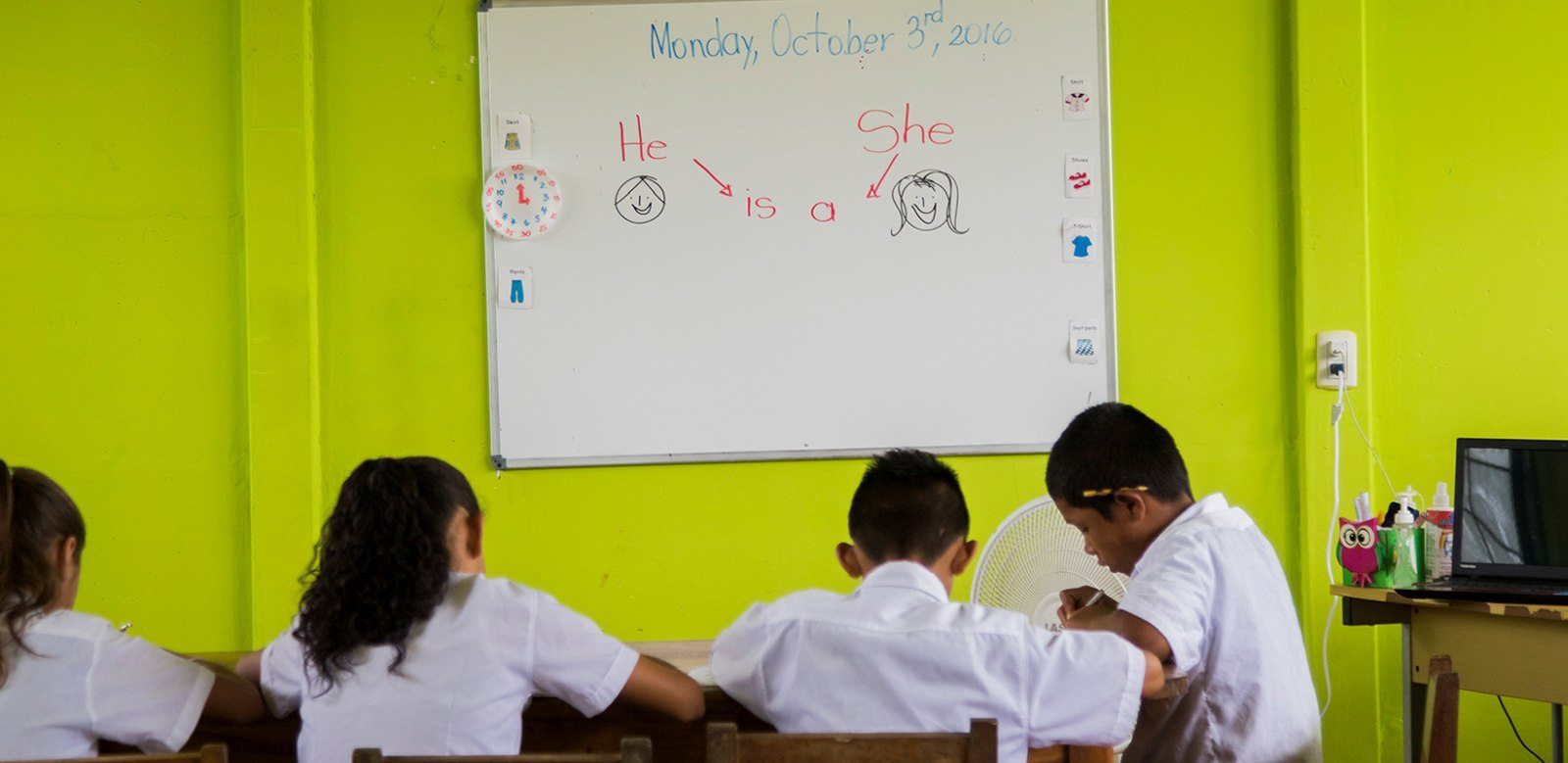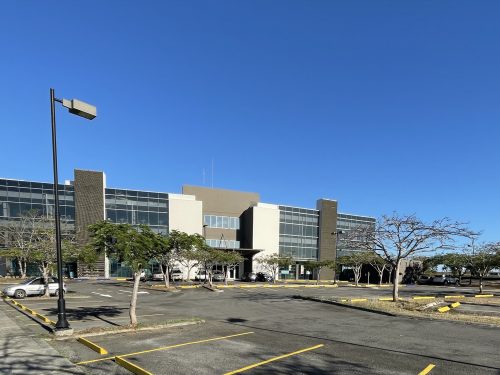
Guanacaste has a problem: Its young people lose the chance to take English classes as their academic level increases. Last year, 93 percent of seventh grade students received English classes, but that number dropped to 88 percent by 11th grade.
These are some of the conclusions reached following an analysis by The Voice of Guanacaste based on information from the Education Ministry (MEP), which details student enrollment and the number of students who receive English instruction.
That’s bad news for the region if you consider that companies require a high level of English fluency to fill job openings, and they often have difficulty finding qualified applicants. (See related story, “What Do Tourism Business Owners Look For in Talent From Guanacaste?”)
Nevertheless, not all the news is bad: English coverage (the number of young students enrolled in classrooms who receive English instruction) in the province is better than the national average (92 percent and 90 percent, respectively), and nine out of 10 students take English classes in secondary school in the province.
What Is Happening?
In theory, English coverage during the third cycle (seventh, eighth and ninth) is 100 percent.
“All study plans include three weekly classes in English,” said the Education Ministry’s national English adviser, Ana Campos.
But the numbers show a different reality.
There could be a decrease in 10th and 11th grades due to the number of students who choose to study French instead of English, Campos said. Several regional principals in Guanacaste agreed when interviewed for this story.
Another possibility is that there aren’t enough English teachers, according to former Education Minister Leonardo Garnier.
“The difference could be due to a problem in appointing teachers, which affects the number of teachers in secondary school,” Garnier said, although he wasn’t certain.
Campos was unable to state a specific reason, and she did not entirely agree that a lack of appointments is the cause of the problem. In the past two years, the appointment process has sped up at MEP, she said.

Cantonal Complications
There also are important differences between grade schools and high schools in some cantons. Bagaces, Cañas, Carrillo, La Cruz, Liberia and Santa Cruz saw a drop in the number of students who received English classes in high school compared to grade school in 2015.
Students from Bagaces and Santa Cruz have faced this problem every year from 2010 to 2015. In Bagaces schools, English coverage in the last six years was 97 percent on average, but in high schools, it was 91 percent on average.
In Santa Cruz, grade school students received English in 98 percent of the cases on average in the last six years, while high school students saw that percentage drop to 91 percent.
The canton with the most critical situation in 2015 was Cañas, whose schools managed to provide English classes to 86 percent of grade school students, and only 73 percent for high school students. The Cañas Professional Technical High School had the most troubling problem, managing only to teach English to 36 percent of its students, despite having 100 percent coverage in 2014.
Others such as Nicoya, Nandayure, Hojancha, Abangares and Tilarán improved coverage in high schools as compared to grade schools.
All of the school principals in Guanacaste received the results of this analysis and the respective databases. However, at press time, none stated the specific reasons why coverage is less than 100 percent.







Comments